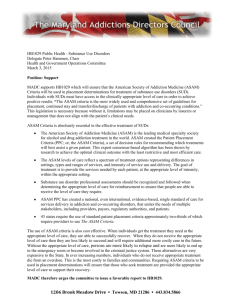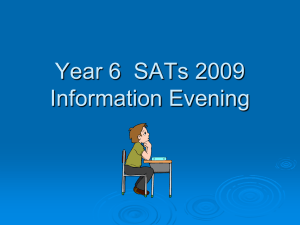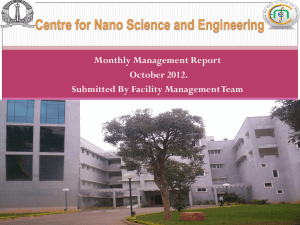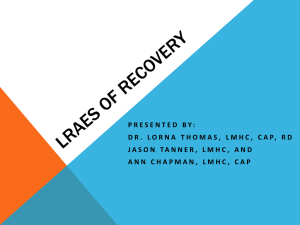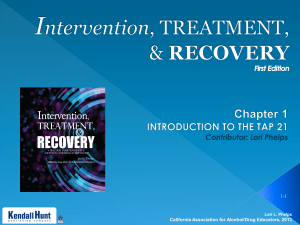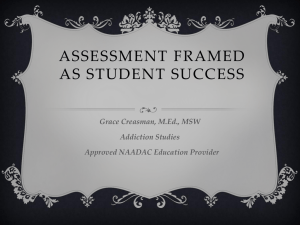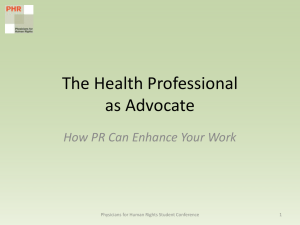ASAM Addiction 101 - American Board of Addiction Medicine
advertisement
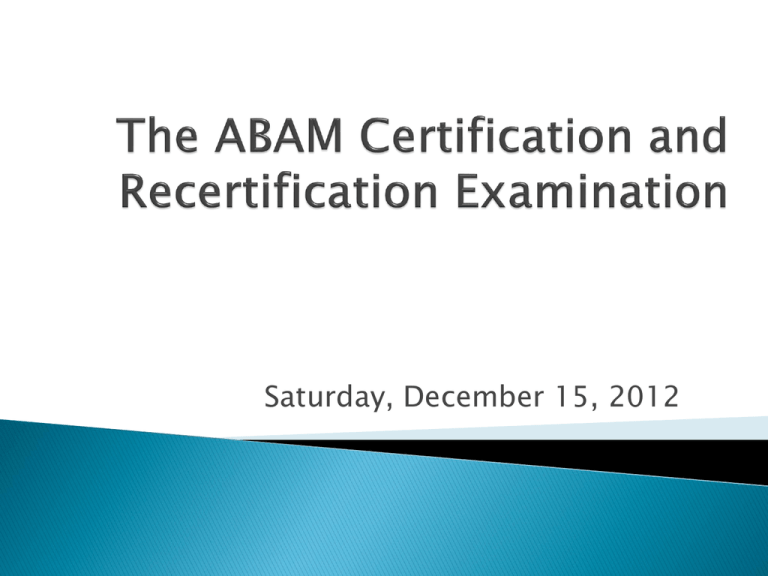
Saturday, December 15, 2012 • • • • Purpose: To identify for patients, physicians with the knowledge, experience and skills to provide quality healthcare within the specialty of Addiction Medicine. ABAM-Certification involves a rigorous process of testing that is designed and administered by specialists in the field of Addiction Medicine. This certification closely parallels standards set by the ABMS. Select criteria are met to sit for the examination. To date, over 2,500 Physicians have been certified in Addiction Medicine by ABAM. Pediatrics 1% Preventive Med 1% Emergency Med 2% OBGyn Addiction Psych 1% 2% Misc 8% Psych Anesthesiology 2% Psych 37% Addiction Med 15% Family Practice Internal Med Addiction Med Anesthesiology Addiction Psych Internal Med 15% Emergency Med Family Practice 16% OBGyn Pediatrics Preventive Med Misc • • • • • • • Treatment Centers, hospitals, & managed care organizations actively seek & recruit ABAM-Certified members to provide direction & leadership for their programs. Several states (such as NJ) require their Medical Directors be certified in ADM. Physicians who hold ABAM-Certification qualify to receive a waiver from the special registration requirements of the Controlled Substances Act for the provision of medication-assisted opioid therapy. Board Certification enhances applications for those interested in medical school faculty appointments. State Hospitals & Medical Facilities call on ABAM-Certified Physicians for testimony on issues and legislation related to substance abuse & treatment. The widely-recognized National Committee on Quality Assurance (NCQA) 2008 Standards for Accreditation of Managed Behavioral Healthcare Organizations (MBHOs) require MBHOs accredited by NCQA to have policies & procedures for credentialing "psychiatrists and/or physicians who are certified in addiction medicine." NCQA-recognition supports ABAM-certified physicians eligibility for credentialing by NCQA-accredited MBHOs. Board Certification provides Credibility with third-party payers when advocating for patient treatment/length of stay. Pass Rates 1986 (76%) 1987 (79%) 1988 (83%) 1990 (84%) 1992 (89%) 1994 (83%) 1996 (79%) 1998 (80%) 2000 (86%) 2002 (85%) 2004 (88%) 2006 (85%) 2008 (86%) 2010 (82%) Computer examination is on Saturday, December 15th at Prometric Test Centers (over 400 test centers to choose from) Prior to the Exam Use your electronic permit (to be sent mid-September by email) to schedule a Prometric test center Take the Tutorial on the ABAM Web Site Confirm your testing appointment & verify your test time (in the late fall) (7 days prior to the exam as test times vary) Get to the Test Center 30 mins. early. No late entry is available for the exam. Bring to the test center: • • • • A copy of your electronic permit Government-Issued Identification Test Center Confirmation, Address & Phone # Snacks Stay current with general medical & psychiatric journals and guidelines Read ASAM’s Principles of Addiction Medicine Read ASAM’s Journal of Addiction Medicine Subscription included with ASAM membership Attend either Review Course Held in Nashville, TN or in San Francisco, CA (given by ASAM, 9/20-22/12) (given by CSAM, 9/5-8/12) Do online exam tutorial just prior to exam Focus on information from clinical setting and on common and important patient problems Emphasis on assessing application of knowledge (vs. recalling isolated facts) The Exam Includes: Multiple choice questions (single best answer, some matching, some multi-part items) Clinical vignettes Calculator & provides normal range values The Exam does not include: trick questions, k-type questions, true/false items, and un-scored items Optional Tutorial* Block 1: 50 Items Block 2: 50 Items Block 3: 50 Items Block 4: 50 Items Block 5: 50 Items Optional Break Time Optional Survey 15 mins. 60 mins. 60 mins. 60 mins. 60 mins. 60 mins. 15 mins. 5mins. Total: 5.5 Hours *can be taken as break time

